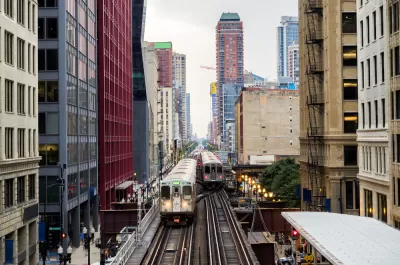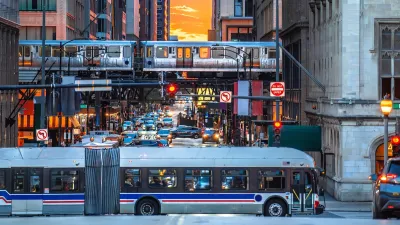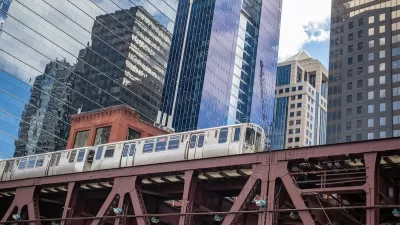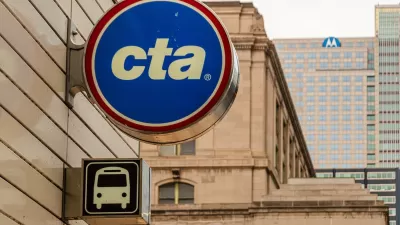A new scorecard from the Chicago Transit Authority will update the public on the agency’s progress on key issues like service delivery, frequency, and infrastructure improvements.

A new scorecard from the Chicago Transit Authority seeks to provide more effective communication to the public about the agency’s progress in achieving the COVID recovery goals set by the Meeting the Moment action plan. As John Greenfield explains in Streetsblog Chicago, “Released in August, the document set targets for providing reliable service, reducing crime, better cleaning protocols, rolling out new amenities, better customer engagement, and more complete staffing.”
The scorecard includes the percentage of service delivered, the percentage of gaps over 15 minutes and double the scheduled interval, as well as progress in hiring, progress in the installation of tactile bus stops to assist riders with visual impairments, station upgrades, and citations issued.
“The scorecard also includes a bus and rail ridership graph. While the system recently reached a new pandemic-era high of an average of about 900,000 trips per weekday, that’s only 64 percent of the pre-COVID norm of 1.4 million rides per weekday.” According to Greenfield, “The CTA has a long way to go in order to rebuild ridership to pre-pandemic levels, which will require restoring rider trust that transit commutes will be safe, predictable, efficient, and sanitary.” The scorecard is one way to boost the agency’s accountability and transparency.
FULL STORY: CTA launches Meeting the Moment scorecards to track progress on pandemic recovery

Alabama: Trump Terminates Settlements for Black Communities Harmed By Raw Sewage
Trump deemed the landmark civil rights agreement “illegal DEI and environmental justice policy.”

Study: Maui’s Plan to Convert Vacation Rentals to Long-Term Housing Could Cause Nearly $1 Billion Economic Loss
The plan would reduce visitor accommodation by 25% resulting in 1,900 jobs lost.

Planetizen Federal Action Tracker
A weekly monitor of how Trump’s orders and actions are impacting planners and planning in America.

Waymo Gets Permission to Map SF’s Market Street
If allowed to operate on the traffic-restricted street, Waymo’s autonomous taxis would have a leg up over ride-hailing competitors — and counter the city’s efforts to grow bike and pedestrian on the thoroughfare.

Parklet Symposium Highlights the Success of Shared Spaces
Parklets got a boost during the Covid-19 pandemic, when the concept was translated to outdoor dining programs that offered restaurants a lifeline during the shutdown.

Federal Homelessness Agency Places Entire Staff on Leave
The U.S. Interagency Council on Homelessness is the only federal agency dedicated to preventing and ending homelessness.
Urban Design for Planners 1: Software Tools
This six-course series explores essential urban design concepts using open source software and equips planners with the tools they need to participate fully in the urban design process.
Planning for Universal Design
Learn the tools for implementing Universal Design in planning regulations.
Caltrans
Smith Gee Studio
Institute for Housing and Urban Development Studies (IHS)
City of Grandview
Harvard GSD Executive Education
Toledo-Lucas County Plan Commissions
Salt Lake City
NYU Wagner Graduate School of Public Service





























